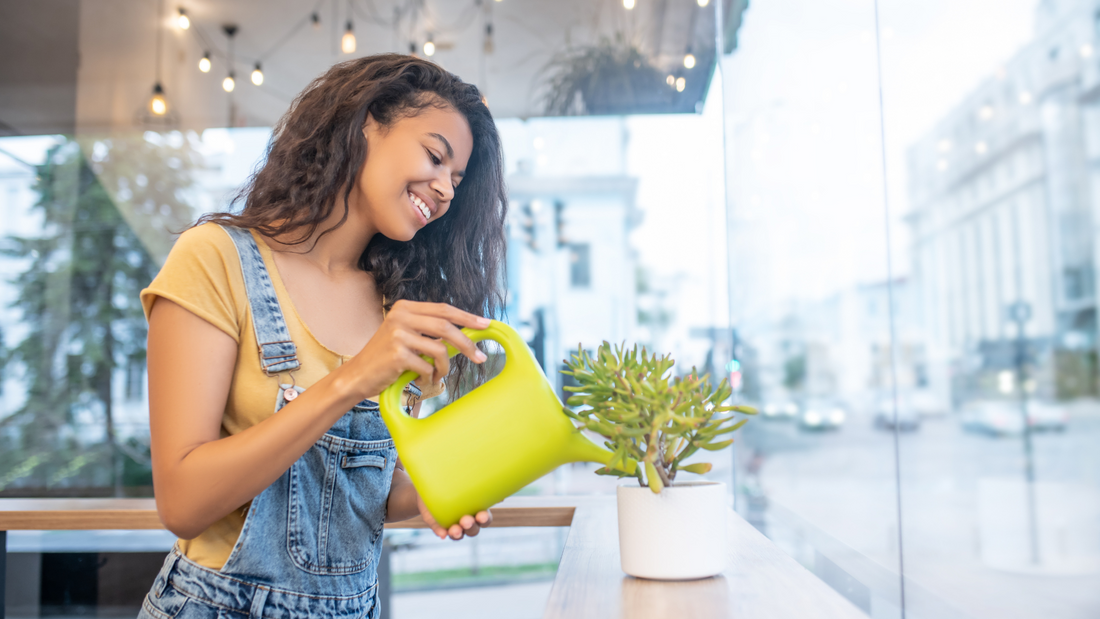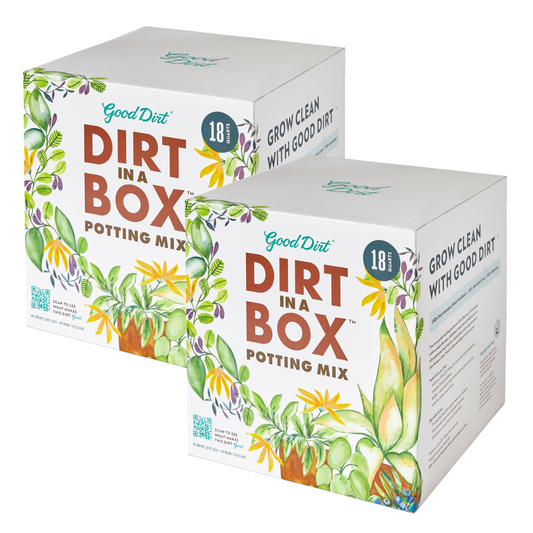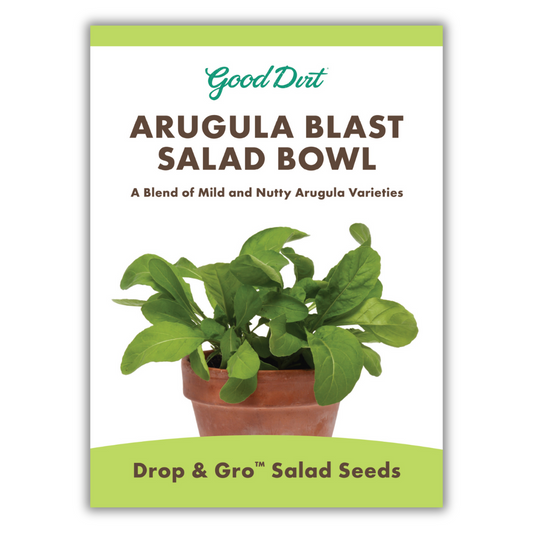Correctly maintaining your plant's hydration level is ESSENTIAL for them to thrive.
Knowing the type of dirt in the planter or garden is the key to determining ideal watering schedules.
We designed Good Dirt potting mixes to require less frequent waterings, so it can take some adjusting! Our clean dirt is actually a soilless peat-based product, whereas many other mixes are bark-based. Let's break down the key differences between these two popular ingredients in the potting mix world.
Peat Based Products vs. Bark Based Products
What is a bark-based product?
Growing media (e.g., dirt for your plants) that are bark-based are mostly shredded or ground bits of bark. The bark is sourced from fallen or scraped-off tree bark.
Bark-based products protect your plant's roots from extreme temperatures because they serve as natural insulation. Bark is found in potting soil, soil conditioners, and mulch-type products.
Unfortunately, bark breaks down quickly, leaving you with densely packed soil. Dense dirt takes away available air space, and your plant's root health depends on air just as much as water.
A word of caution for cheaper soil mixes that say "wood products" in the ingredient list: that means it's not bark and could be anything made of wood! It could be wooden pallets or old furniture, leaving fuel, chemicals, or other unwanted byproducts in your dirt. These ground-up "wood products" break down even faster than bark!
What is a peat-based product?
In peat-based products like Good Dirt, the primary ingredient is an organic, soilless, naturally sterile medium harvested from peat bogs. Soils with peat moss are typically lightweight, fluffy, and have good airflow.
Peat moss is part of the same plant as sphagnum moss. The sphagnum moss originates from the plant on the surface of a soil or marsh, while peat moss is the layer beneath it that holds the saturated, dead sphagnum moss. Because of this, peat moss naturally holds water, like a sponge — it can soak up to 20 times its own weight in moisture!
That stellar water retention means you need to hear a word of caution: be careful not to overwater peat-based soils.

A Common Problem: Overwatering
Overwatering is a common issue for plant parents everywhere. While we never want our plants to go thirsty, we have to be cautious about giving them too much water. Overly wet soil attracts pests like gnats and opens your plant up to other diseases and fungus. Even worse, it can quickly cause plants to die. So, if you've noticed bugs in your soil, it's time to think about your watering habits.
Overwatering = Bugs
Fungus gnats, or otherwise referred to as soil gnats, are attracted to moist soil. Female fungus gnats will lay their eggs on the soil’s surface – up to 300 eggs. Yep, you read that right, up to 300 eggs that will hatch on your beloved plant within three to six days.
The gnat larvae will find their food by eating the soft parts of plant stems and also burrow down within the soil to eat the roots. Wilting is a sign that they may be feasting on the roots of your plant. Keep reading to the TIPS section to see how to get rid of an infestation.

Bugs are not in our peat based Good Dirt potting mixes, but if our dirt is excessively wet over a long period of time, fungus gnats may try to make their home in it.
How to Water Plants in Good Dirt's peat-based potting mix
Let’s talk about how to best water plants potted in Good Dirt. We designed Good Dirt for ideal air and water retention — so your plants (both indoors and outdoors) would need less frequent waterings! This might be a big learning curve if you’re used to bark based potting mixes.
Here are our pro tips:

#1 — Don’t overwater!
Overwatering leads to the suffocation of a plant. Over-saturated soil equates to a lack of oxygen that can travel to the plant’s roots, and the inevitable rotting of the soil, if not caught soon enough.
Overwatering kills a plant more easily than underwatering.
Signs of overwatering are yellowing leaves, wilted or limp leaves, and stunted growth. To learn more about watering plants, check out Everything you Need to Know about Watering Plants for a comprehensive, concise guide.
If you have overwatered, you can allow the soil to dry, you can repot the plant in fresh soil, remove any dead leaves, remove standing water from the saucer, and make sure drainage holes are not blocked.
When you see those pesky fungus gnats, go ahead and isolate the plant if it is around others – and check to make sure they haven’t navigated to surrounding plants.
The next steps vary depending on your comfort level in your plant nursing skills, but you can use fly paper to catch them, dehydrate your plant, find a DIY treatment option, or buy a spray to get rid of the nuisance causing harm to your plant.

#2 — Touch the dirt
Touching the dirt is the quickest and easiest way to check if your plant needs water or not.
The top of the potting mix may look dry, so you need to insert your finger into the soil to check for moisture. If you feel moisture, don’t water.
When you stick your finger into the soil, you can tell if it’s dry, moist, or too wet. When doing this though, make sure to reach deep into the soil enough that your finger is inserted to your second knuckle, or two to three inches deep.
If the soil sticks together — it is moist, and if it crumbles or remains loose — it is dry. If it’s wet, don’t add more water!
When in doubt, moisture meters are a great additional tool to monitor your plant’s water needs.

#3 — Use pots with drainage holes — and don’t add rocks to the bottom of your containers.
You must use pots with drainage holes! A hole in the bottom of your container is critical. The water needs to be able to freely drain, so that your plant doesn’t end up sitting in water.
Rocks should not be placed at the bottom of containers. They block the drainage needed for excess water to exit the soil. And if the soil cannot expel the moisture, it will cause rotting roots.





